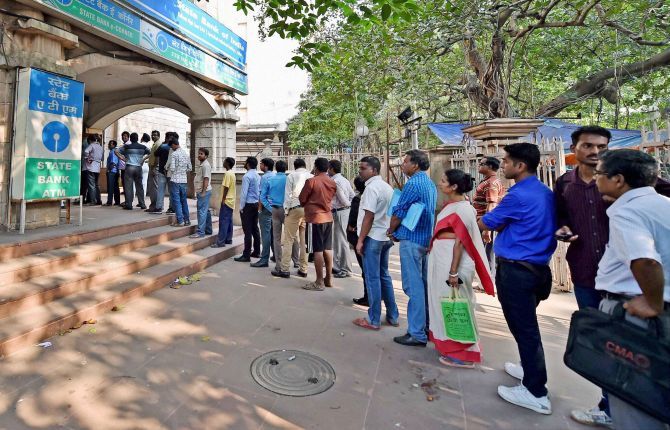Yet, no bank has been taken to task for its actions, says Harsh Roongta.

Let's understand the report of the Internal Study group, set up by the Reserve Bank of India (RBI) to review the working of the marginal cost of funds-based lending rate (MCLR) system of fixing loan rates, through a cricketing analogy.
Imagine this hypothetical situation.
For some time, there is a feeling that bowlers are tampering with the ball to obtain prodigious swing. They even use sharp objects to tamper with the seam.
They have been reported by various official committees but have been getting away due to the benefit of the doubt.
The International Cricket Council, after several meetings, decides that it will now allow only specially made seamless balls during matches in all countries. This decision is expected to take out any possibilities of ball tampering.
Will it work?
This analogy is similar to the Internal Study group report. For one, it isn't the first one.
Similar reports have preceded the introduction of the Bank Prime Lending Rate system, Base rate system and the MCLR systems.
Two, it was well-documented each time that the system was not working because the banks were not following the laid-down processes. Yet, no bank was taken to task for its actions, much like ball tampering bowlers.
Instead, newer systems were introduced that was expected to overcome the flaws of the previous system.
The best thing about this study report is that they have looked into specific practices of four banks (two public sector and two private sector banks) and detailed out how each of the four banks have gamed the Base Rate system -- the dominant benchmark for bulk of the loans given by the banks despite the introduction of MCLR system more than 18 months ago.
They have also detailed how the MCLR system itself has also been gamed by various banks.
They have provided detailed recommendations on how the situation can be corrected.
The crux of the recommendation is as follows.
There should be an external benchmark like the Repo Rate notified by RBI. The spread over the benchmark should be allowed to be set by the banks but to remain fixed for the duration of the loan.
The reset dates should be once every quarter.
All loans to be shifted to the new system by a cut-off date so that multiple systems don't co-exist. Transparency should be increased.
The operation of the system should be supervised.
Bulk deposit rates should also be linked to the Repo rate. This new system is expected to improve the monetary policy transmission by the banks.
What the report does not say is that no system can possibly work if the players are allowed to get away with ball tampering as the referee simply looks on.
Unlike a cricket match, the gaming of the lending system has caused huge losses to the borrowers. It is not enough to say that they should not be allowed to do so.
The banks can simply tamper with the spread instead of the benchmark.
The regulator can indicate seriousness about the new rules by calling the banks to account for the past practices and compensate borrowers. If the regulator doesn't do it, I am sure it will be done by the courts in response to public interest litigations filed by concerned citizens and organisations.
Image used only for representational purpose. Photograph: Reuters.
Harsh Roongta is a Sebi-registered fee-only investment advisor.












 © 2025
© 2025